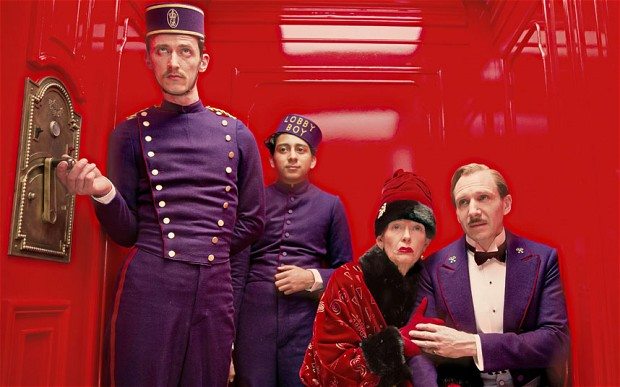
 With the release of his eighth feature film, I think it is now safer than ever to say that Wes Anderson has reached a point of cinematic perfection. His most ambitious work yet, “The Grand Budapest Hotel”, is Anderson’s magnum opus. At its core, “The Grand Budapest Hotel” is the story of M. Gustave (Ralph Fiennes), famed concierge to the Grand Budapest. Anderson wastes no time in alerting the audience that while this is a story about M. Gustave, it is in no means his story. Leaping from the present, to 1985, then abruptly to 1968, and finally resting in 1932 the film is more than your typical frame story; rather a frame story contained within a frame story. So while M. Gustave remains the central figure throughout the bulk of the narrative, the film is equally Zero (Tony Revolori and F. Murray Abraham) and the unnamed author’s (Jude Law and Tom Wilkinson) story as well.
With the release of his eighth feature film, I think it is now safer than ever to say that Wes Anderson has reached a point of cinematic perfection. His most ambitious work yet, “The Grand Budapest Hotel”, is Anderson’s magnum opus. At its core, “The Grand Budapest Hotel” is the story of M. Gustave (Ralph Fiennes), famed concierge to the Grand Budapest. Anderson wastes no time in alerting the audience that while this is a story about M. Gustave, it is in no means his story. Leaping from the present, to 1985, then abruptly to 1968, and finally resting in 1932 the film is more than your typical frame story; rather a frame story contained within a frame story. So while M. Gustave remains the central figure throughout the bulk of the narrative, the film is equally Zero (Tony Revolori and F. Murray Abraham) and the unnamed author’s (Jude Law and Tom Wilkinson) story as well.
The film chronicles the unlikely friendship of M. Gustave and Zero, as the two are bonded through the theft of a painting of immeasurable value. In usual Anderson flare, the duo’s chronicle is envisioned with whimsical color and framing, tracking cameras, lavish sets, quirky caricatures and stop motion animation. “The Grand Budapest Hotel” exhibits Anderson’s vision at its utmost capacity. The real emotional strength of the film lies in the performances. Fiennes’ captivating character both pretentious and endearing, Revolori’s innocence, and Abraham’s subtle charm; the range of emotions contained within the film are almost incalculable. Anderson’s attention to detail, matched with the multitude of stars, grants even the smallest of roles the ability to transcend. Bill Murray, Adrien Brody, Willem Dafoe, Jason Schwartzman and even the brief inclusion of Owen Wilson, deliver some of the grandest moments within the film. Special praise must be given to Dafoe, who has created one of the most horrifying cinematic monsters to appear outside of the horror genre. His character is somewhere between Max Schreck’s Nosferatu and Anthony Hopkins’ Hannibal Lecter.
While the exceptional performances drive the narrative, it is in Anderson’s brave formal experimentations that the film should be highest praised. For many, Anderson’s decision to frame the majority of the film in 4:3 ratio (also known as the Academy Ratio) may have seemed arbitrary; even detrimental to the viewing experience. The apparent loss in width does cause a claustrophobic sensation. When further assessed, it becomes clear that the ratios throughout the film change in correspondence to historical accuracy. So we experience the Academy Ratio during the 1932 sequences, Cinemascope (2.35:1) for 1968 and the current industry standard 1.85:1 for the remaining periods. This subliminal instruction of cinematic history may be lost on certain viewers, but it is in Anderson’s willingness to defy cinematic conventions for ideological ends that I find “The Grand Budapest Hotel” to be most engaging. A must-see for cinephiles and Anderson fanatics alike.